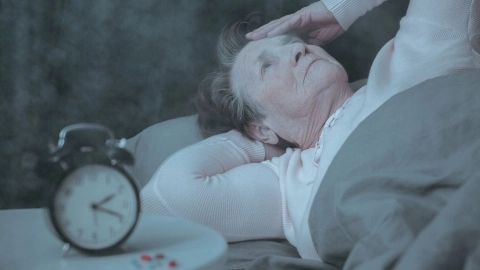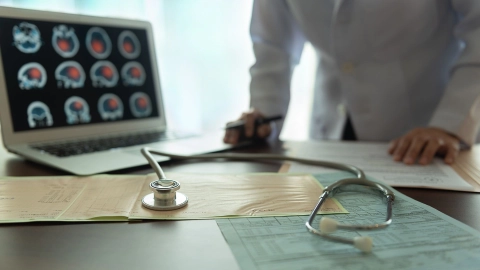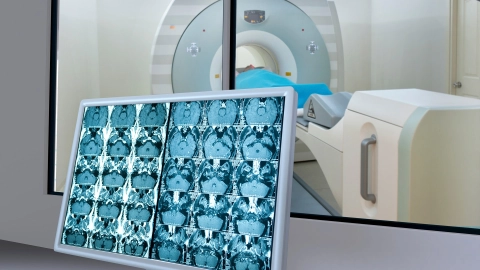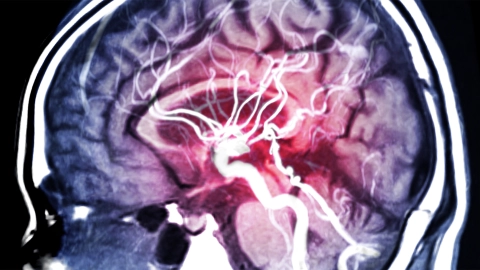Shingles (herpes zoster) is a painful viral skin condition. The viruses attack nerves and cause an inflammation that spreads over the skin.
Find out more
People with depression feel despondent, have negative thoughts and withdraw from family and friends for weeks at a time. Daily life, work, and studying become difficult.
Find out more
People with sleep disorders are often tired and exhausted because they have not had enough restful sleep. Up to one third of people experience problems falling asleep or getting a good night’s sleep.
Find out more
Tick-borne encephalitis (TBE) is a viral infection transmitted by ticks. Vaccination offers protection against TBE.
Find out more
Multiple sclerosis (MS) is the most commonly occurring neurological disease in young adults. At present, there is no cure for MS. However, various treatments help to slow its progression.
Find out more
During a migraine attack, severe headaches occur on one side of the head only. This pain may be accompanied by other symptoms such as nausea and vomiting.
Find out more
Schizophrenia involves phases of an altered perception of reality. This can take the form of delusions, hearing voices or a feeling of being watched, for example.
Find out more
During a stroke some of the blood supply to part of the brain is cut off. This can be life threatening. To prevent serious consequences, rapid treatment is imperative.
Find out more
It is normal to experience fear at times. Fear puts us in a state of readiness so that we can react quickly. However, persistent worry could be an indication of generalized anxiety disorder.
Find out more
People with trigeminal neuralgia experience severe facial pain, especially in the cheeks and jaw. Read on to find out what causes this condition and what can be done about it.
Find out more
A concussion often occurs as a result of an accident. It is the mildest form of traumatic brain injury. Read on to find out more about the symptoms and treatment options.
Find out more
People with Alzheimer’s disease suffer a considerable loss of memory and cognitive functioning. The disease cannot be cured. However, treatment can have a positive effect on its progression.
Find out more
People with Restless Legs Syndrome (RLS) feel a great urge to move their legs. The unpleasant feeling in the legs only occurs during rest, particularly in the evening and at night.
Find out more
Encephalitis is an inflammation of the brain. It can have several causes, the most frequent being viruses.
Find out more
Leprosy is a bacterial infectious disease that primarily occurs in South East Asia, South America, and Africa. Though leprosy is curable, there are still serious outcomes.
Find out more
Polio (poliomyelitis) can cause permanent paralysis. Polio viruses have been almost eradicated thanks to large-scale vaccination campaigns. Unvaccinated children and adults can contract polio.
Find out more
Meningitis is an inflammation of the meninges (brain membranes). This can have multiple causes. If triggered by bacteria, meningitis can quickly become life-threatening.
Find out more
Toxoplasmosis is caused by the parasite Toxoplasma gondii. A third of all people are carriers, but only around 5% of them show symptoms of the disease.
Find out more
Epilepsy is a condition where the brain or parts of it become overactive. Medication can prevent seizures and help patients sustain a good quality of life.
Find out more
Autism spectrum disorders are developmental disorders with specific characteristics: people with autism have problems communicating with others and with social competence.
Find out more
Vascular dementia is caused by circulatory disorders. The brain receives too little oxygen and becomes damaged, resulting in a reduction in mental abilities.
Find out more
Botulism is a rare type of poisoning caused by the bacterial botulinum toxin. Frequent sources of poisoning include canned and preserved foods. All suspected cases must be treated in hospital.
Find out more
Tetanus is triggered by certain bacteria. Even a small wound can be the portal of entry for the pathogen. Vaccination offers protection.
Find out more
When a person feels dizzy, it may be due to benign paroxysmal positional vertigo. This is caused by deposits in the balance organ in the ear. The dizziness usually stops after a few weeks.
Find out more
Rabies is a viral disease transmitted by the bite of an infected animal. Anyone visiting a high-risk area can be vaccinated prior to traveling. All suspected cases of rabies must be medically treated.
Find out more
There are different types of brain tumor. Learn more about the different types, their treatment options and risk factors known of to date.
Find out more
Parkinson’s disease affects the nervous system and increasingly restricts mobility.
Find out more
Chronic fatigue syndrome refers to severe fatigue that does not improve despite rest. There is no specific cure, but various measures that can help.
Find out more
With ALS, nerve cells that control muscles deteriorate and die. This results in muscle loss, muscle stiffness and paralysis. Treatment seeks to relieve symptoms as effectively as possible.
Find out more
Cluster headaches come in phases, or “clusters”. They involve severe pain, always on one side only and mostly around the temples or eyes.
Find out more
Fibromyalgia is a chronic pain disorder in which the brain’s ability to process pain is disrupted. The measures that help with fibromyalgia differ greatly from person to person.
Find out more
Nagging, pressing headaches that occur now and then are called tension headaches. They can be relieved with non-prescription painkillers.
Find out more
Conditions in which several nerves outside of the brain and spinal cord are damaged are referred to as polyneuropathy. There are many different causes and symptoms.
Find out more
A brain aneurysm is a bulge in an artery in the brain. This often goes unnoticed without causing symptoms. If the aneurysm ruptures, it may cause a life-threatening brain hemorrhage.
Find out more
With diabetic neuropathy, nerve damage occurs due to permanently elevated blood glucose levels. Pain and numbness in the arms and legs are typical symptoms.
Find out more
Vitamin B is a group of eight vitamins, the most important of which are B1, B6, B9 (folate) and B12. Eating a balanced diet prevents a deficiency in these vitamins.
Find out more
Bell’s palsy is a paralysis of the facial muscles usually on one side of the face due to nerve damage. Read on to find out more about causes, symptoms, diagnosis and treatment.
Find out more
Diabetes insipidus causes excessive urination and increased thirst. It is caused by a hormone that is missing or ineffective.
Find out more
Neuralgic amyotrophy causes severe pain in the arm and shoulder. It is due to an inflammation of certain nerves.
Find out more
A transient ischemic attack often precedes a stroke. A TIA happens when part of the brain no longer gets enough blood supply. The symptoms are paralysis, visual impairment and slurred speech.
Find out more

















































































